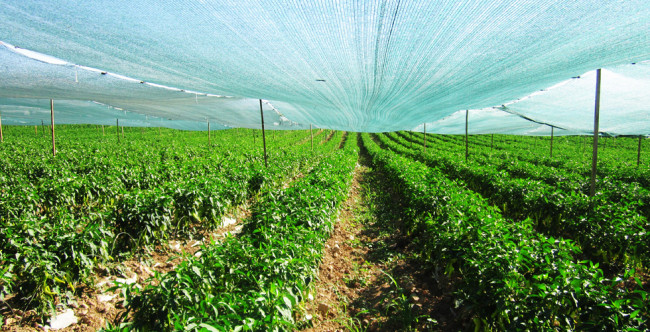
All pesticides will go through a degradation process in the environment. Older types of pesticides, such as DDT, are persistent and will have long half-lives while newer types of pesticides will be degraded more rapidly. Today’s pesticides will not be registered for use before it has been demonstrated that the compounds will not persist in the environment for a prolonged time beyond their period of use. Degradation is often divided between “Abiotic” meaning chemical or photochemical or “biotic” meaning microorganisms. Information on degradation pathways for pesticides is available from a number of sources.
While most pesticides are degraded into substances with little or no negative effect on the environment there are a number of exceptions. Some pesticides will even degrade into substances that are more toxic than the mother compound, and these need to be taken into consideration when planning the testing.
|
Pesticide |
Degradation product (Metabolite) |
|
Aldicarb |
Aldicarb Sulfone |
|
Aldicarb |
Aldicarb Sulfoxide |
|
Methomyl |
Thiodicarb |
|
Diuron |
1-(3,4-dichlorophenyl) urea (DCPU) |
|
Butachlor |
2-chloro-2,6-diethylacetanilide |
|
Diuron |
Diuron desmethyl (DCPMU) |
|
Chloridazon |
Chloridazon-desphenyl |
|
Chloridazon |
Chloridazon-desphenyl-methyl |
|
Chlorotoluron |
Chlorotoluron-desmethyl |
|
Isoproturon |
Isoproturon-desmethyl |
|
Isoproturon |
Isoproturon-monodesmethyl |
|
Parathion |
Paraoxon-ethyl |
|
Parathion |
Paraoxon-methyl |
|
Simazine |
Simazine-2-hydroxy |
|
Terbuthylazine |
Terbuthylazine-desethyl-2-hydroxy |
|
Clodinafop |
Clodinafop propargyl |
|
Norflurazon |
Demethylnorflurazon, desmethylnorflurazon |
|
Quinalphos |
Diethylphosphate, Diethylthiophosphate |
|
Trinexapac-ethyl |
Trinexapac |
|
Atrazine |
Atrazine-2-hydroxy |
|
Atrazine |
Atrazine-desethyl |
|
Atrazine |
Atrazine-desisopropyl |
|
Azoxystrobin |
Azoxystrobin-o-demethy |
|
Fenamiphos |
fenamiphos sulfone, fenamiphos sulfoxide |
|
Haloxyfop-methyl (isomers) |
Haloxyfop, Haloxyfop-P-methyl, Haloxyfop-2-ethoxyethyl |
|
Malaoxon |
Malathion |
|
Methiocarb |
Methiocarb sulfoxide |
|
Phosmet |
Phosmet oxon |
|
Terbuthylazine |
Terbuthylazine-desethyl |
|
Terbuthylazine |
Terbuthylazine-hydroxy |
|
Imidacloprid |
6-chlornicotinic acid, Imidacloprid olefin, imidacloprid urea |
|
Metribuzin |
Metribuzin-desamino |
|
Glyphosate |
AMPA |
|
BAM |
Dichlobenil |
|
Dithiocarbamates |
Propylene thiourea |
|
Atrazine |
Atrazine-desethyl desisopropyl |
|
Metribuzin |
Metribuzin-desamino diketo |
|
Metribuzin |
Metribuzin-diketo |
Degradation of pesticides
All pesticides will go through a degradation process in the environment. Older types of pesticides, such as DDT, are persistent and will have long half-lives while newer types of pesticides will be degraded more rapidly. Today’s pesticides will not be registered for use before it has been demonstrated that the compounds will not persist in the environment for a prolonged time beyond their period of use. Degradation are often divided between “Abiotic” meaning chemical or photochemical or “biotic” meaning microorganisms. Information on degradation pathways for pesticides are available from a number of sources.
While most pesticides are degraded into substances with little or no negative effect on the environment there are a number of exceptions. Some pesticides will even degrade into substances that are more toxic than the mother compound, and these need to be taken into consideration when planning the testing.
|
Pesticide |
Degradation product (Metabolite) |
|
Aldicarb |
Aldicarb Sulfone |
|
Aldicarb |
Aldicarb Sulfoxide |
|
Methomyl |
Thiodicarb |
|
Diuron |
1-(3,4-dichlorophenyl) urea (DCPU) |
|
Butachlor |
2-chloro-2,6-diethylacetanilide |
|
Diuron |
Diuron desmethyl (DCPMU) |
|
Chloridazon |
Chloridazon-desphenyl |
|
Chloridazon |
Chloridazon-desphenyl-methyl |
|
Chlorotoluron |
Chlorotoluron-desmethyl |
|
Isoproturon |
Isoproturon-desmethyl |
|
Isoproturon |
Isoproturon-monodesmethyl |
|
parathion |
Paraoxon-ethyl |
|
parathion |
Paraoxon-methyl |
|
Simazine |
Simazine-2-hydroxy |
|
Terbuthylazine |
Terbuthylazine-desethyl-2-hydroxy |
|
Clodinafop |
Clodinafop propargyl |
|
Norflurazon |
Demethylnorflurazon, desmethylnorflurazon |
|
Quinalphos |
Diethylphosphate, Diethylthiophosphate |
|
Trinexapac-ethyl |
Trinexapac |
|
Atrazine |
Atrazine-2-hydroxy |
|
Atrazine |
Atrazine-desethyl |
|
Atrazine |
Atrazine-desisopropyl |
|
Azoxystrobin |
Azoxystrobin-o-demethy |
|
Fenamiphos |
fenamiphos sulfone, fenamiphos sulfoxide |
|
Haloxyfop-methyl (isomers) |
Haloxyfop, Haloxyfop-P-methyl, Haloxyfop-2-ethoxyethyl |
|
Malaoxon |
Malathion |
|
Methiocarb |
Methiocarb sulfoxide |
|
Phosmet |
Phosmet oxon |
|
Terbuthylazine |
Terbuthylazine-desethyl |
|
Terbuthylazine |
Terbuthylazine-hydroxy |
|
Imidacloprid |
6-chlornicotinic acid, Imidacloprid olefin, imidacloprid urea |
|
Metribuzin |
Metribuzin-desamino |
|
Glyphosate |
AMPA |
|
BAM |
Dichlobenil |
|
Dithiocarbamates |
Propylene thiourea |
|
Atrazine |
Atrazine-desethyl desisopropyl |
|
Metribuzin |
Metribuzin-desamino diketo |
|
Metribuzin |
Metribuzin-diketo |

